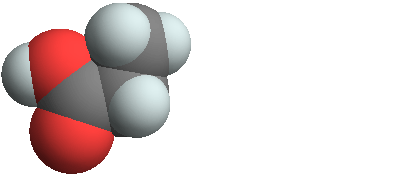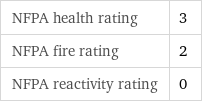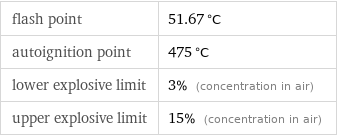Input interpretation

propionic acid
Chemical names and formulas

formula | CH_3CH_2COOH Hill formula | C_3H_6O_2 name | propionic acid alternate names | carboxyethane | ethanecarboxylic acid | ethylformic acid | luprosil | methylacetic acid | propanoic acid | propanyl acid mass fractions | C (carbon) 48.6% | H (hydrogen) 8.16% | O (oxygen) 43.2%
Lewis structure

Draw the Lewis structure of propionic acid. Start by drawing the overall structure of the molecule, ignoring potential double and triple bonds: Count the total valence electrons of the carbon (n_C, val = 4), hydrogen (n_H, val = 1), and oxygen (n_O, val = 6) atoms: 3 n_C, val + 6 n_H, val + 2 n_O, val = 30 Calculate the number of electrons needed to completely fill the valence shells for carbon (n_C, full = 8), hydrogen (n_H, full = 2), and oxygen (n_O, full = 8): 3 n_C, full + 6 n_H, full + 2 n_O, full = 52 Subtracting these two numbers shows that 52 - 30 = 22 bonding electrons are needed. Each bond has two electrons, so in addition to the 10 bonds already present in the diagram add 1 bond. To minimize formal charge oxygen wants 2 bonds and carbon wants 4 bonds. Identify the atoms that want additional bonds and the number of electrons remaining on each atom: Fill in the 1 bond by pairing electrons between adjacent highlighted atoms: Answer: | |
3D structure

3D structure
Basic properties

molar mass | 74.08 g/mol phase | liquid (at STP) melting point | -23.5 °C boiling point | 141 °C density | 0.993 g/cm^3 solubility in water | miscible
Units

Hydrophobicity and permeability properties

predicted LogP hydrophobicity | 0.31 predicted LogS | 0.68
Basic drug properties

approval status | experimental | small molecule
Liquid properties (at STP)

density | 0.993 g/cm^3 vapor pressure | 2.4 mmHg dynamic viscosity | 0.00103 Pa s (at 25 °C) surface tension | 0.02721 N/m refractive index | 1.386
Units

Thermodynamic properties

specific heat capacity c_p | liquid | 2.063 J/(g K) molar heat capacity c_p | liquid | 152.8 J/(mol K) molar heat of vaporization | 57.3 kJ/mol | specific heat of vaporization | 0.773 kJ/g | molar heat of combustion | 1528.3 kJ/mol | specific heat of combustion | 20.631 kJ/g | molar heat of fusion | 10.66 kJ/mol | specific heat of fusion | 0.1439 kJ/g | critical temperature | 601 K | critical pressure | 4.53 MPa | (at STP)
Chemical identifiers

CAS number | 79-09-4 Beilstein number | 506071 PubChem CID number | 1032 PubChem SID number | 3463 SMILES identifier | CCC(=O)O InChI identifier | InChI=1/C3H6O2/c1-2-3(4)5/h2H2, 1H3, (H, 4, 5)/f/h4H InChI key | XBDQKXXYIPTUBI-JLSKMEETCG RTECS number | UE5950000 MDL number | MFCD00002756
NFPA label

NFPA label

NFPA health rating | 3 NFPA fire rating | 2 NFPA reactivity rating | 0
Safety properties

flash point | 51.67 °C autoignition point | 475 °C lower explosive limit | 3% (concentration in air) upper explosive limit | 15% (concentration in air)

DOT hazard class | 8 DOT numbers | 1848
Toxicity properties

lethal dosage | 2600 mg/kg (oral dose for rats) short-term exposure limit | 45 mg/m^3 threshold limit value | 10 ppmv

probable lethal dose for man | 600 mL (milliliters) long-term exposure limit | 30 mg/m^3 (over 8 hours) RTECS classes | agricultural chemical and pesticide | mutagen | primary irritant